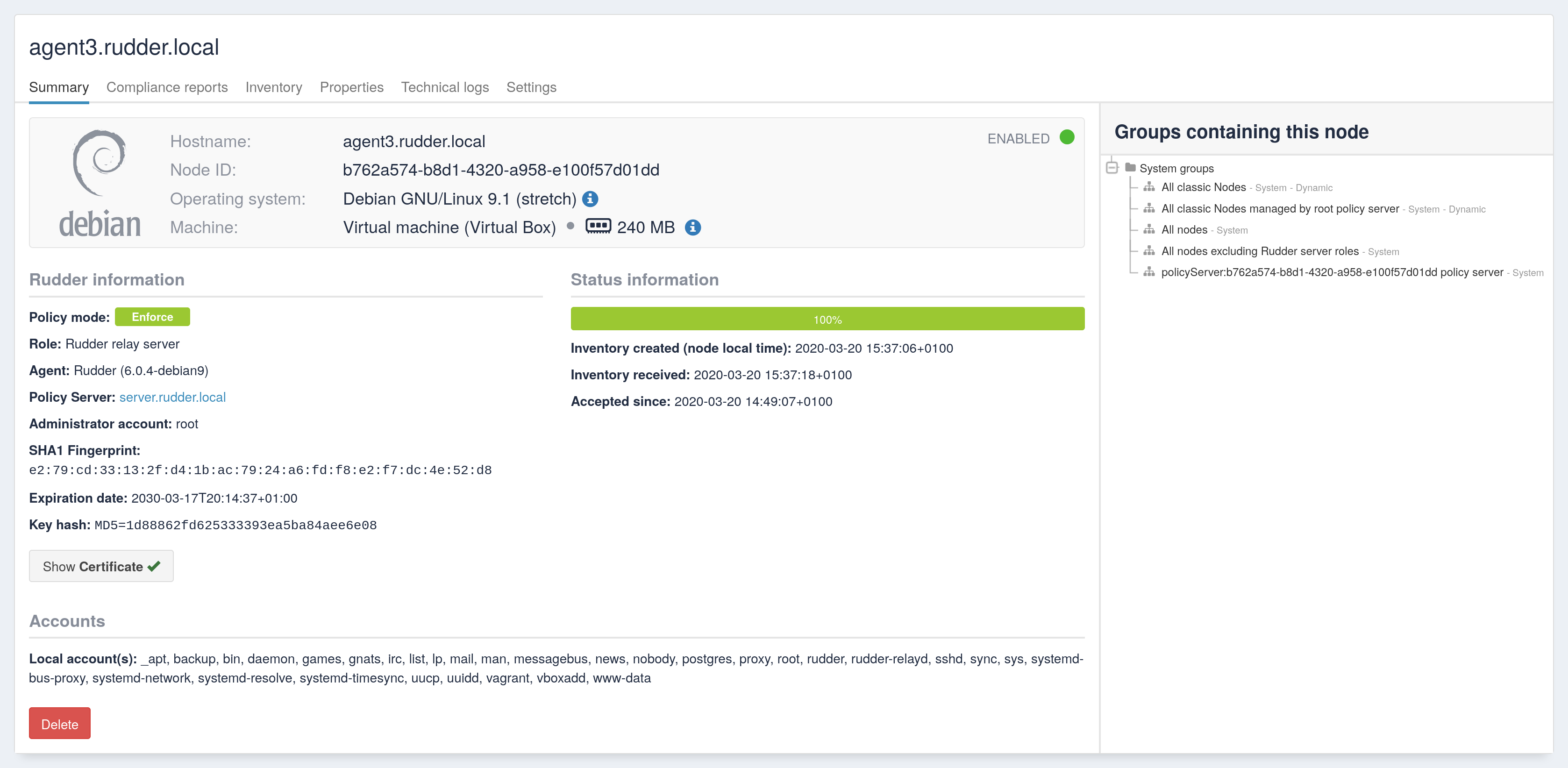Install Rudder relay on RHEL or CentOS
|
Relay servers won’t work if you don’t have a valid scale-out-relay plugin installed. If you install a relay without that plugin, policy generation will fail, preventing new policies to be applied to your Nodes. More information about plugins in dedicated section |
Installation
Each official package is signed with our GPG signature. To ensure the packages you will install are official builds and have not been altered, import our key into rpm using the following command:
rpm --import https://repository.rudder.io/rpm/rudder_rpm_key.pub
Our key fingerprint is:
pub 1024R/6F07D355 2012-11-09 Rudder Project (RPM release key) <security@rudder-project.org>
Key fingerprint = 1141 A947 CDA0 4E83 82C1 B9C4 ADAB 3BD3 6F07 D355
Add a yum repository for Rudder:
echo '[Rudder_7.0] name=Rudder 7.0 baseurl=http://repository.rudder.io/rpm/7.0/RHEL_$releasever/ gpgcheck=1 gpgkey=https://repository.rudder.io/rpm/rudder_rpm_key.pub' > /etc/yum.repos.d/rudder.repo
|
If you have an active subscription, use the following to get access to long term support (you need to replace the user name and the password by your Rudder account): echo '[Rudder_7.0] name=Rudder 7.0 username=LOGIN password=PASSWORD baseurl=http://download.rudder.io/rpm/7.0/RHEL_$releasever/ gpgcheck=1 gpgkey=https://download.rudder.io/rpm/rudder_rpm_key.pub' > /etc/yum.repos.d/rudder.repo Or for RHEL/CentOS < 7: echo '[Rudder_7.0] name=Rudder 7.0 baseurl=https://LOGIN:PASSWORD@download.rudder.io/rpm/7.0/RHEL_$releasever/ gpgcheck=1 gpgkey=https://LOGIN:PASSWORD@download.rudder.io/rpm/rudder_rpm_key.pub' > /etc/yum.repos.d/rudder.repo |
Install the package:
yum install rudder-server-relay
To complete this step, please make sure that your node is configured successfully and appears in your Rudder web interface.
On the root server
You have to tell the Rudder root server that a node will be a relay. To do so,
launch the rudder-node-to-relay script on the root server, supplying the UUID of the
host to be considered as a relay. You can find the UUID of your node with the
rudder agent info command.
rudder server node-to-relay <aaaaaaaa-bbbb-cccc-dddd-eeeeeeee>
Validation
When every step has completed successfully:
-
The Rudder root server will recognize the new node as a relay
-
It will generate specific policies for the relay
-
The relay will update and switch to his new role
This is an example of node details pane showing a relay server. Note the "Role: Rudder relay server" part that shows that the machine has successfully changed from a node to a relay.

Adding nodes to a relay server
When you have at least one relay, you will likely want to add nodes on it.
You then have two possible cases:
-
You want to switch an already existing node to the relay
-
You want to add a new one
The procedure on both cases is the same, you have to:
-
Update the policy server with the IP address or the fully qualified domain name of the relay server (instead of the root server) and reset pinned public key
rudder agent policy-server <rudder relay ip or hostname> rudder agent server-keys-reset
-
Trigger an inventory immediately to make sure the node is registered correctly
rudder agent inventory
After those steps, the node should be registered correctly on your Rudder infrastructure.
← on Debian/Ubuntu on SLES →